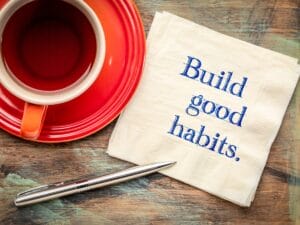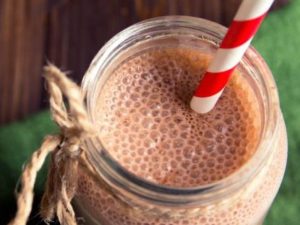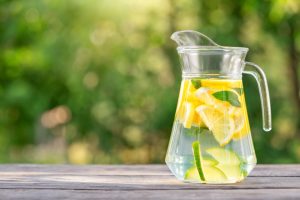Spring is here which means seasonal allergies are too! Tree, grass, and weed pollen make life miserable for millions of hay fever sufferers every year, causing sneezing fits, sore throats, and stuffy noses. Antihistamine drugs may help but often have side effects like drowsiness. But what about food? Can diet help relieve hay fever?
What Is Hay Fever?
Hay fever, or seasonal allergic rhinitis as it is officially known, occurs when your immune system reacts to pollen from grasses, trees, flowers, and weeds.
The pollen irritates the lining of your nose, eyes, and throat, causing immune cells to release histamine and other inflammatory chemicals. This leads to itching, swelling, and irritation.
Typical hay fever symptoms include:
-
- Sore throat.
- Tickly cough.
- Runny or blocked, stuffy nose.
- Itchy, watery eyes.
- Sneezing.
- Headache.
- Mucous in your throat.
When Is Hay Fever Season?
Hay fever season starts in late Winter / early Spring when the tree pollens appear. This is soon followed by grasses in late Spring and early Summer and weed pollen in Fall. Spring and Fall are often peak seasons for seasonal allergic rhinitis, although pollen levels vary according to your location and climate.
Who Is Prone to Hay Fever?
Anyone of any age can suffer from hay fever. Some people grow out of their childhood hay fever and no longer experience any symptoms as an adult. Others develop it for the first time in their twenties or thirties, or even later. Many women start with seasonal allergic rhinitis and other allergies during menopause when hormone changes affect immune and gut health.
How Long Does Hay Fever Last?
This varies from person to person. If you are only sensitive to one type of pollen, your symptoms will subside when that pollen level drops. If you are sensitive to several types of pollen your symptoms can potentially last from late Winter through to Fall.
Why Is My Hay Fever So Bad All of a Sudden?
There are several reasons why seasonal allergies can suddenly get worse.
Stress has a major impact on immune health. If you are under a lot of stress, your immune system may not work as effectively.
Illness and infection can affect the membranes lining your nose and throat and leave you more sensitive to pollen.
Location change. If you’ve moved to a different city or even a different part of the same city, the pollen levels may be higher than where you lived before.
Air pollution from traffic fumes can make hay fever worse for some sufferers.
Weather patterns affect pollen levels. A mild winter followed by a cool spring and a sudden burst of warmth in early summer can trigger a pollen burst that can worsen symptoms.
Can Diet Help Relieve Hay Fever?
Yes! Adopting an anti-inflammatory diet and lifestyle can be hugely beneficial for managing seasonal allergic rhinitis. The clue here is in the name of the condition. The word “rhinitis” translates as “inflammation of the nose,” meaning the membranes lining the nose are inflamed.
The Eat Burn Sleep anti-inflammatory diet and lifestyle program minimises inflammation by supporting gut and immune health. These two systems are intrinsically linked because so much of your immune system resides in the gut.
Alongside these immune cells, your gut microbiome is also hard at work supporting immunity. It helps to regulate immune responses and inflammation and communicates with other microbiomes in the body, such as the oral and nasal microbiomes.
Research shows that people with allergic rhinitis have an altered microbiome in the nasal passages which may be associated with inflammation (Chen et al, 2022). As we can’t micromanage individual bacteria within a microbiome, it’s important to create the right environment for beneficial species to thrive. Following an anti-inflammatory diet and lifestyle is the ideal way to do this. I suggest the 6-Week Reset as the place to start – it has all the meal plans, food lists, and guidance you need to begin your anti-inflammatory journey.
Here’s what EBS Member Eleonora has to say about the program:
I’m in the sixth week of the Six Week Reset and I cannot thank Yalda enough for the EBS lifestyle. During the last two years, I’ve struggled a lot with various issues like bloating, being overweight, psoriasis, thyroid malfunction, and acne, but now I’ve found the lifestyle that is the answer to all my problems.
I finally started losing weight, changing my body composition, feeling energetic all day long, less bloated, fewer cravings in my PMS phase, and still counting the benefits!
This lifestyle completely switched my body and my mind, and I cannot live without all the specialized advice I can find on the EBS platform anymore. Again, thanks Yalda for your great work!
Want to know more about Eat Burn Sleep? You can take a sneak peek around the platform here and check out our membership options here.
And you might also like to read:
The Anti-inflammatory Diet and Lifestyle
Does Sleep Help With Inflammation?
Here’s to a happy and healthy hay fever season,
Yalda x



































